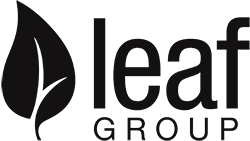Electrostatic Painting Advantages and Disadvantages
Electrostatic painting is a process that electrically and chemically bonds specialized paint coatings to metal surfaces. An electrostatic paint spray rig positively charges the sprayed paint particles as they leave the spray gun. The metal surface receiving the paint is negatively charged.

The paint is immediately drawn to the metal surfaces because of the opposing electrical charges. The electrostatic painting is an effective process for some applications.
Superior Performance
The performance and durability of electrostatically applied paint outperforms any other type of paint coating. Each paint particle electrically bonds itself to the painted metal surface. The resulting finish is flawless, dries quickly and is extremely durable. During the manufacturing process for household appliances, office furniture and automobiles, the final finish coats are most frequently applied via electrostatic painting.
Highly Toxic Paints
Electrostatic paints are solvent-based, high-gloss enamels with an extremely high percentage VOC (volatile organic compound) content. During the application process, electrostatic paints give off high amounts of toxic fumes; therefore the painting environment for the electrostatic paint process must be highly monitored, and have a high rate of air exchange. In a close environment, the fumes can build up, creating an explosion and health hazard to the painter.
High Start-up Costs
In addition to higher costs for the paint and coatings, electrostatic paint equipment is much more expensive than similar capacity airless and high volume low pressure (HVLP) paint spray equipment. A painting contractor can purchase a commercial capacity airless sprayer for under $250 as of 2011. A similar capacity HVLP sprayer that is used for stain and varnish applications can be purchased for $100 more. Electrostatic paint spray rigs cost 10 times these amounts. Commercial quality portable electrostatic spray equipment retails in the neighborhood of $3,000 to $4,000.
Narrow Target Market
The target market for electrostatic painting is very narrow. Electrostatic painting is widely used for manufacturing office furniture, appliances and automobiles; however, reaching the electrostatic repainting market requires expensive targeted marketing and extensive networking. A painting contractor with an existing business can add electrostatic painting to the services he offers, and absorb the start-up costs while he builds the electrostatic side of the business. In this narrow industry, however, a painting contractor who wishes to only offer electrostatic painting services may not be able to find enough work to justify the start-up expense.
The Drip Cap
- Electrostatic painting is a process that electrically and chemically bonds specialized paint coatings to metal surfaces.
- The metal surface receiving the paint is negatively charged.
- The paint is immediately drawn to the metal surfaces because of the opposing electrical charges.
- During the application process, electrostatic paints give off high amounts of toxic fumes; therefore the painting environment for the electrostatic paint process must be highly monitored, and have a high rate of air exchange.
- In this narrow industry, however, a painting contractor who wishes to only offer electrostatic painting services may not be able to find enough work to justify the start-up expense.
References
Resources
Writer Bio
Since 2003, Timothy Burns' writing has appeared in magazines, management and leadership papers. He has contributed to nationally published books and he leads the Word Weavers of West Michigan writers' group. Burns wrote "Forged in the Fire" in 2004, and has published numerous articles online. As a trained conference speaker, Burns speaks nationally on the art, science and inspiration of freelance writing.
Photo Credits
- Thinkstock/Comstock/Getty Images
- Thinkstock/Comstock/Getty Images
More Articles



